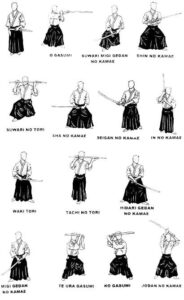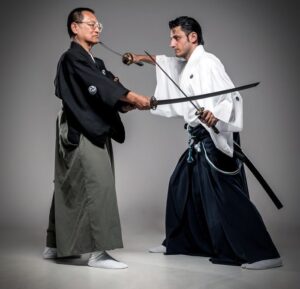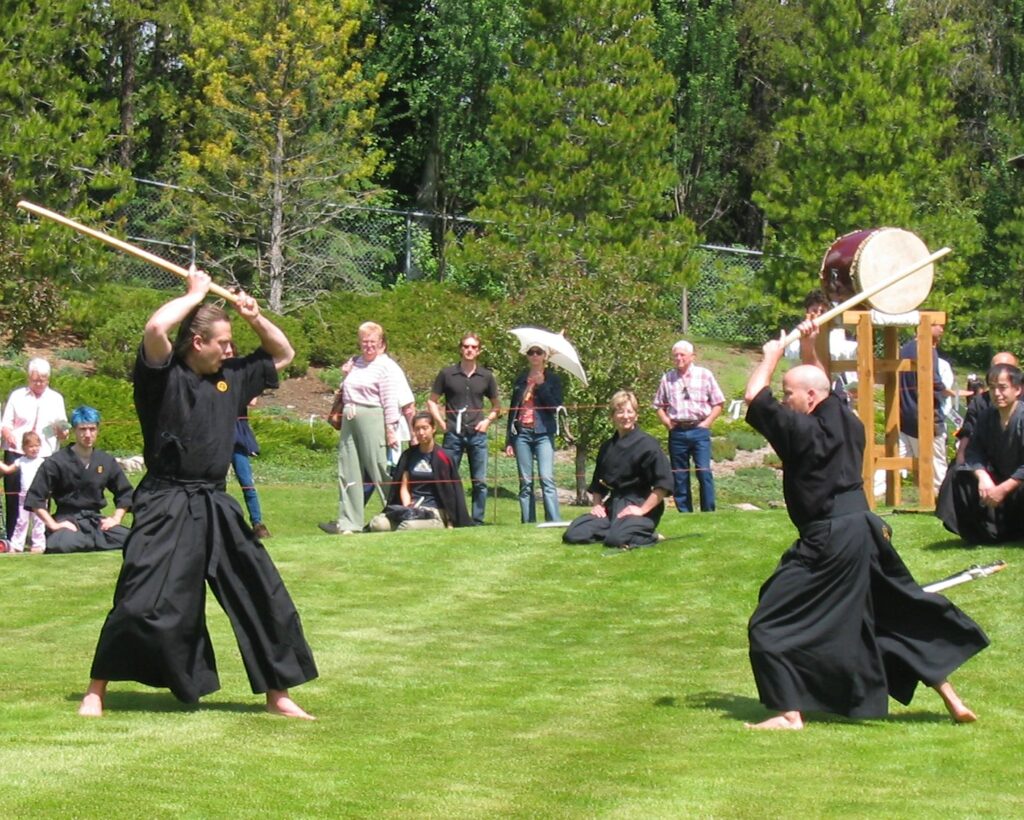Kenjutsu : Combat Stories – 05
-by Ishita Mondal
–Reading Time – 6 min Approx
“A good swordsman is more important than a good sword.”- Amit Kalantri, Wealth of Words
As its literal meaning suggests, Kenjutsu is the art of the sword. It is all about how you move and twist the swords controlling your mind as per the opponent’s moves. Along with physical efforts, you need to run a calculation game in your mind. Well, by physical efforts, it does not mean the power you need in wrestling. It is the power to use the tactics swiftly. Have you seen a swordsman? How spontaneously they move the body along with their swords! Circling their wrists, they create a perfect balance with their swords. The game continues by attacking the opponent and defending oneself. Mesmerizing it is!
Well, the game itself and the rich history of the game is mesmerizing in their way. Starting in pre-modern Japan, the game has influenced many other martial art forms. It was originated in Japan. But, now, it has spread all over the world. People learn it out of passion and to meet the need for self-defense at once. Not only it gives you pleasure or sports, but also, it helps to boost the confidence of defending oneself. Here, let’s learn more about it.
Kenjutsu- What is it:
Before we begin with other details, let’s define kenjutsu. It is a Japanese martial art that originated in the medieval century. It is a game of swordsmanship which involves two persons standing opposite to each other. It is mostly a one-on-one game. A wide range of techniques is used to execute the art form perfectly. And to apply the techniques, diverse kinds of weapons are used. We will go into that detail later on.
The Origin and History of Kenjutsu:
Sword has always been a significant part of Japanese culture. As per the ancient Japanese tradition, the three most sacred things are – mirror, jewel, and sword. While the mirror represents wisdom, the jewel stands for compassion. And sword signifies valor. So, in the ancient days, swords and swordsmanship are important for the Japanese people.
It is said that the first iron sword was manufactured in Japan in the fourth century. Mainly based on the technology imported from Korea and China, swords became an indispensable part of their lives. Heard about katana? The popular curved Japanese sword? This most popular Japanese sword was developed in the Heian period. The period started at 794 A.D. and ended at 1185 A.D.
The Edo period or Tokugawa period is a time when the game of kenjutsu became more popular. More than 500 schools of swordsmanship emerged. By the beginning of the 19th century, the bamboo sword or shinai and the shield called bogu, came into use. With this development, the full-swing moves are included in the game as the risks of serious harm are reduced.
Later in the early 19th century, the samurai classes were dissolved, and with this, the swordsmanship too faced a major decline. It was restored in a standardized form with the training at Dai Nippon Butoku Kai. It was an organization for martial art training established in 1895. By the 20th century and after that, people’s interest in Japanese martial arts grew. And they started taking an interest in special martial art forms like kenjutsu.
How you Play it- Weapons and Techniques of Kenjutsu:
Being a weapon-based martial art form, kenjutsu incorporates many different types of weapons. The spectators often appreciate the versatility of the equipment. One of the mostly-used weapons is- Bokken or Bokuto. Being made of wood, it is used as a training sword. The name of the weapon signifies its nature perfectly. While “boku” means wood and “ken” means sword.
Other weapons are:
Shinai
It is a bamboo-made sword. It includes four pieces of bamboo tied together with a leather knot.
Sai
This type of sword includes three sharp edges. Some of the kenjutsu schools use it to practice the game.
Katana
Now, let’s come to the real game. Katana is the traditional Japanese sword that is slim and curved and has a single edge. The weapon is mostly connected with Samurai.
Kodachi
It is another sword that is used in Samurai techniques. Being a short sword that is less than 60 cm in length, it is used by the kenjutsu practitioners to apply swift moves.
Odachi
Also known as Nodachi, it is a long sword of the length of 4 feet. It is mostly a field weapon used by two hands. Usually, the experienced Samurai practitioners use it.
In addition, the game of kenjutsu asks for certain protective equipment. They are keigoki or jacket, hakama or trousers, and obi or belt. Some additional stuff is- tenugui or cotton head towel, do or breastplate, tare or armor for waist, and kote or gloves and helmet with neck or shoulder protector.
So, these are weapons that help to perform the swordsmanship game perfectly. Now, let’s have a brief idea about how is the technique. Well, definitely, it won’t make you a Samurai specialized in kenjutsu overnight. But, yes, you will surely enjoy learning how the swordsmen perform it. Who knows, it develops an interest within you to learn it further and be a good kenjutsu practitioner?
The Technique:
Kenjutsu is a game with diverse techniques included in it. The common techniques found are cutting, jabbing, parrying, defending, thrusting, etc. A set of sequenced moves of kata is often used. No matter which technique you apply, you need to focus on your footwork. It is vital as the balance of the whole body lies in the feet. The game is all about assuming how your surrounding is and how you need to attack or defend accordingly. Both individual attacking and counter-attacking are found in this game. The traditional form is limited to Japan itself and is often acknowledged as a secret training process. Only Japanese Samurai practitioners know it well. However, modern kenjutsu is popular in different areas in different forms. You can find it in many martial art training centers.
Facts You Should not Miss about Kenjutsu:
Swordsmanship is an interesting game to learn. Kenjutsu, being the popular Japanese swordsmanship, has won the hearts of millions of sports lovers. However, there are many interesting facts about this martial art form. Let’s have a look.
- The use of a paired katana is popular as nitōjutsu, which means ‘two-sword method.’
- Kenjutsu experienced a decline in 1868 when Meiji Restoration emerged, and the Samurai classes were dissolved.
- Often, the training in kenjutsu does not include full-body contact.
- The major schools of kenjutsu are- Kage-ryū (Aizu), Chūjō-ryū, Tenshin Shōden Katori Shintō-ryū.
- The descendant styles of the major schools are- Ono-ha Ittō ryū, Mizoguchi-ha Ittō-ryū, etc.
- Kenjutsu combined with Iaijutsu develops Udundi on the island of Okinawa.
- Okinawa is the only sword game that is left from the island. It is associated with the noble Motobu family during the reign of Ryukyu Kingdom.
- Kenjutsu influences martial art styles like kendo.
In the Long Run- Kenjutsu is the Art of Sword:
As we mentioned, the sword is connected to the lives of the Japanese in many ways- religious, social, and so on. Hence, using a sword in sports is common. But, not all of the sword games are graceful enough like Kenjutsu. The art is worthy enough to be practiced and enjoyed. Here, we have shared all of the essential details. We hope you have learned what kenjutsu is and how it is significant in martial arts history. Let’s meet another day with some new martial art styles. Till then, Ja ne!(See you, Bye).
-by Ishita Mondal
Dear Reader, Hope you liked the post. If you think our initiative “The Creative Post” is worth supporting, then please support us by paying the amount you think we are worthy of. We believe, the value of content should be decided by the consumer. Hence we request you to evaluate our worth and pay accordingly by Clicking Here.


